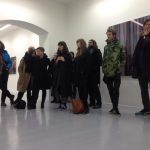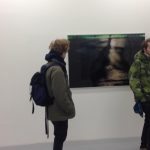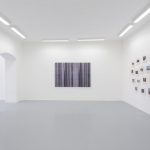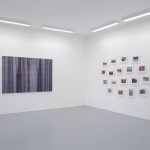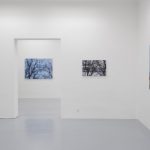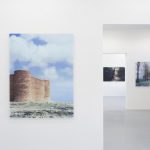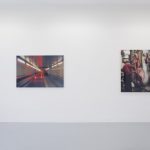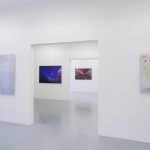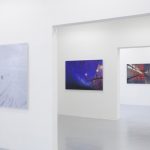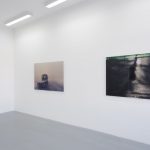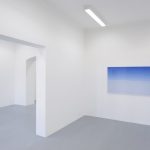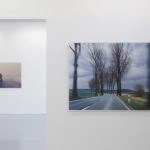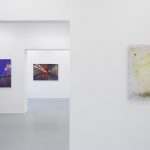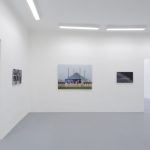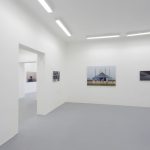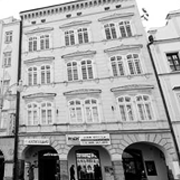Jörg Sasse – File Transfer
| Termín | – |
|---|
ve čtvrtek 12.2. 16:00 komentovaná prohlídka s autorem
Vernisáž ve čtvrtek 12. 2. 2015 v 18:00 h
kurátor výstavy: Pavel Vančát
Galerie současného umění a architektury /Dům umění města České Budějovice
hl. kurátor du: Michal Škoda
Jörg Sasse, patřící k ústředním osobnostem proslulé „düsseldorfské školy“ fotografie, od 90. let systematicky a osobitě sleduje vlastnosti syntetizovaného digitálního obrazu, ale také otázku, jak fotografický obraz zpětně formuje naše vlastní vnímání světa. V celém svém díle Sasse neustále upozorňuje na arbitrárnost a nepřehlednost naší obrazové paměti a její fotografické opory, aby v různých podobách vytvářel jakýsi osobní paralelní vesmír fotografie, který je osvobozen od konkrétnosti a existuje ve formě obrazových idejí.
Sasseho výstava v českobudějovickém Domě umění se soustředí na autorův emblematický cyklus Tableaus (Obrazy), v nichž od roku 1993 složitou apropriací, kombinací a postprodukcí fotografií vytváří svoje vlastní fiktivní a přitom archetypální výjevy. Výstava koncipovaná samotným autorem přímo pro prostory Domu umění je vůbec první samostatným představením tohoto významného německého umělce v České republice.
Veškerá fotografie je druhem transformace. Ať už to přijmete či odmítáte, není tomu vyhnutí. J. S.
Jörg Sasse (* 1962, Bad Salzuflen, Německo) studoval v letech 1982-87 na Staatliche Kunstakademie Düsseldorf v ateliéru Bernda and Hilly Becherových. Od drobných aranžovaných absurdních zátiší, která dále rozvíjel v nalezených detailech každodenního designu, se Sasse se začal soustředit na to, co sám nazývá Alltäglichkeit, tedy časovost. Jeho detaily interiérů, veřejných prostor a výloh popisují časovost a dočasnost jak marginálních kulturních stop, tak samotné fotografie. Zcela logicky pak tento zájem vedl Sasseho ke sběratelství, kdy z rozličných zdrojů skupoval fotografické archivy, na jejichž kategorizaci a transformaci založil celou svoji další tvorbu. V roce 1993 vytváří Sasse tehdy ještě primitivními prostředky digitálních obrazových editorů svoje první syntetické digitální obrazy, které nazývá Tableaus. Z vlastní sbírky fotografických archivů (ale někdy i vlastních fotografií) digitalizuje vše, co jej zaujme, a jednotlivé snímky podrobuje dlouhodobé opakované analýze a posléze postupným barevným i perspektivním transformacím a výřezům. Ty nejzajímavější pak používá jako elementy pro syntetizující obrazy, které postrádají většinu časově a místně specifických znaků, aby odrážely spíše obecné vizuální představy a schémata. Sasseho tvůrčí proces je tak naprosto protikladný klasické fotografii: je pracnou syntézou, kdy každé Tableau je dlouhodobě a podrobně konstruováno. Zatímco naprostá většina dnešní digitálně manipulované fotografie se však snaží obraz vylepšit, Sassemu jde o naprostý opak, o znejistění diváka v tom, kde končí realita a začíná fikce. Všechna Tableaus záměrně nesou jen číselná pojmenování, nicméně na autorově webové stránce jsou až absurdně důkladně rozřazena do rozličných, navzájem se volně prolínajících tematických kategorií. Výsledná výstavní podoba velkoformátových diaseců pak dovádí ideu narkotických „před-obrazů“ k působivé přeludnosti, kterou lze jen stěží tiskově reprodukovat.
Od roku 2004 začíná Sasse také vystavovat i elementární singulární studie k dalším možným dílům, takzvané Skizzen (Skici). Právě ty pak tvoří materiál jeho projektu Speicher, odrážejícího z jiné strany dlouhodobý zájem o kategorizaci obrazů a obrazové databáze, a vystaveném poprvé v roce 2008 v Musée d’Art Moderne de la Ville de Paris. Celkem 29 zarámovaných fotografií, které Speicher (slovo, které v němčině znamená sýpku, zásobník, sbírku, ale i počítačovou paměť) ukrývá, nemůže divák nikdy vidět v úplnosti, jen si může na vyžádání nechat nainstalovat galerijní obsluhou na připravenou stěnu vlastní selekci dle předem určeného klíče, složitě kombinujícího námětová i vkusová kritéria. Sám Sasse pak osobně testoval vhodnost či nevhodnost desetitisíců různých kombinací jednotlivých fotografií, které převedl do rozsáhlého doprovodného manuálu. Na pomezí mezi minimalistickou sochou a odkazem na prehistorické sálové počítače tak stojí v galerii analogová databáze, do níž Sasse pracně a komplikovaně zakódoval svou vlastní obraznost a obrazotvornost.
Jörg Sasse je v celé své tvorbě spíše než fotografem posedle systematickým archivářem a konstruktérem obrazů, vytvářejícím vlastní paralelní obrazové univerzum. Rozvíjí tak vlastně do mnohem širších a obecnějších důsledků becherovský kvazi-vědecký „nezúčastněný“ přístup: zapojuje automatizovanou (ač vždy nutně řízenou) kategorizaci pro pojmenování našeho obrazového podvědomí, pro psychoanalýzu naší dnes už nevyhnutelně fotografické existence.
Pavel Vančát
VÝSTAVA VZNIKLA ZA LASKAVÉ PODPORY
JÖRG SASSE – FILE TRANSFER
gallery of contemporary art and architecture / house of art, české budějovice
opening Thursday, February 12, 2015 18:00
exhibition from February 13 to March 22, 2015 / open Tue-Sun 10 –13 / 13.30 –18
exhibition curator: pavel vančát / gallery curator: michal škoda
Jörg Sasse, one of the key figures of the well-known Dusseldorf School of Photography, is an artist who since the 1990s has traced systematically and in an original manner the various attributes of the synthesised digital image, and also the question of how the photographic image in turn forms our own perception of the world. Throughout his body of work he has continuously pointed out the arbitrary and non-transparent qualities of our visual memory and its photographic support system, in order to create a kind of personal parallel universe within photography, one which is free of concrete detail, existing solely in the form of visual ideas.
Sasse’s exhibition at the House of Art in České Budějovice is concentrated on his emblematic cycle Tableaus, in which the artist has created since 1993, through a complicated appropriation, combination and postproduction of images, his own fictional and archetypal scenes. The exhibition, prepared by Jörg Sasse specifically for the House of Art, is the first solo presentation of this exceptional German artist in the Czech Republic.
All photography is some kind of transformation. If you want to do it or if you do not want to do it, it is. J. S.
Jörg Sasse (* 1962, Bad Salzuflen, Germany) studied photography at the Staatliche Kunstakademie Düsseldorf (Dusseldorf Art Academy) from 1982 to 1987, as a Master’s student in the studio of Bernd and Hilla Becher. Already in his series from the 1980s, Sasse began to catalogue what he himself terms “Alltäglichkeit”, which can be translated as ordinariness or commonplaceness. Details of interiors, public spaces and shop windows place the focus on temporality and transiency, of both marginal cultural imprints as well as photography as a whole. This interest of Sasse’s, in a different form, also made him a zealous collector: he would buy up entire photo archives, from a variety of sources, for later use and categorization. This is how the transformation and categorization of archives became the basis for all of his subsequent work. In 1993, using only the primitive tools provided by the unsophisticated image editors of the time, Sasse produced his first synthetic digital pictures, which he called Tableaus. He began to digitalize anything and everything that caught his fancy from among his collected photo archives, and even his own photographs. After a lengthy and repetitive analysis, he subjected these individual pictures to gradual colour and perspective transformation and cropping. He then used the most interesting results as the constituent elements for synthesized images that lack most spatiotemporal markers, in order to better reflect more general ideas and schemes. The creative process used by Sasse is in opposition to that of classical photography – it is an arduous synthesis through which he constructs each Tableau in detail over a lengthy period of time. While most digitally manipulated photography attempt to improve the image, Sasse strives to achieve the absolute opposite: to confuse the viewer in regard to the demarcation between reality and fiction. All of Sasse’s Tableaus are deliberately referenced only by number; nevertheless, on his website they are meticulously divided into various, mutually overlapping thematic categories. The final appearance of the large-format prints brings the idea of narcotic “proto-pictures” to an impressive phantasmic perfection, difficult to reproduce in print.
Starting from 2004 Sasse began to exhibit even the elementary singular studies for possible future works – his so-called Skizzen (Sketches). These also constitute the source material for his other project, entitled Speicher (Storeroom), which from a different perspective also demonstrates his long-term interest in the categorization of imagery and image databases, displayed for the first time at the Musée d’Art Moderne de la Ville de Paris in 2008 (although in reference to his work “Speicher” translates as storage space, in German the word contains all of the following meanings: granary, storage, collection, and also the notion of computer memory). The total of 29 framed photographs from the series Speicher cannot be seen in their entirety; the visiting viewer can only ask the gallery assistants to display a unique assembly of selected pieces on a designated wall, using a given complex key that combines subject and taste criteria. Sasse personally tested the suitability or unsuitability of tens of thousands of combinations of individual photographs, which he then transformed into an extensive accompanying handbook. Having thus entered the gallery, visitors encounter an object that partly resembles a minimalist sculpture and partly an antiquated mainframe computer, which contains the analogue database through which Sasse has laboriously encoded his own imagery and imagination.
Across his entire oeuvre Jörg Sasse is more than a photographer, an obsessive archivist and a constructor of images engaged in the creation of his own parallel pictorial cosmos. In his own way, he takes the Becheresque quasi-scientific “unconcerned” approach and develops it to address wider and more general implications: he integrates automated (though always necessarily controlled) categorizations for labelling our visual sub-consciousness, for the psychoanalysis of the unavoidably photographic existence of the present.
Pavel Vančát

